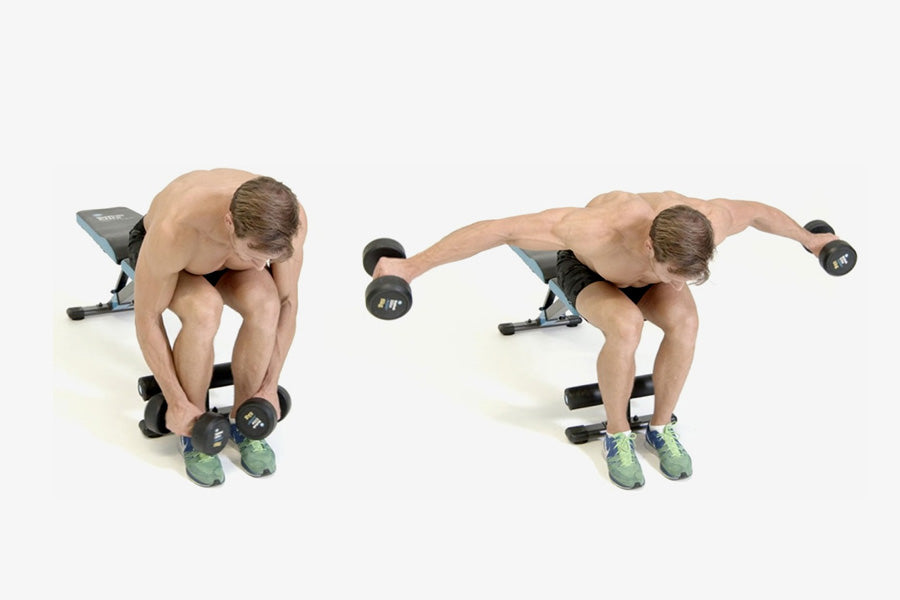|
Exercise Description |
|
|
Main Target Muscles |
Shoulders |
|
Secondary Target Muscles |
Traps, Triceps |
|
Workout Type |
Strength |
|
Gym Gear |
Dumbbells |
|
Fitness Level |
Beginner |
|
Compound/Isolated |
Isolated |
|
Power Move |
Pull |
Target Muscle Group: Shoulders

Reverse Fly Overview: Seated Bent Over Dumbbells
The seated bent-over dumbbell reverse fly is an exercise that strengthens the rear deltoids. The lower back and shoulder muscles, the rear deltoids, are smaller than those of the upper back and shoulder.
These muscles are important in maintaining good posture. Strengthening them with exercises like the seated bent-over dumbbell reverse fly can help you avoid injury.
How to Do it
- To do Dumbbell Reverse Fly from a seated position, place a flat bench on the floor and choose the weight you want from the rack.
- Place your back straight and tilt forward from the hips.
- Let the arms hang straight from the shoulders with a neutral grip. You can also place dumbbells behind the calves.
- Take a deep breath and draw the dumbbells towards the ceiling with rear deltoids.
- Slowly lower dumbbells to their original position.
- Continue repeating until you reach the desired number of reps.
Exercise Tips
- We should focus on the rear deltoid muscles and not the scapular retractors. Shoulder blade movement should be restricted. The shoulder should be moved within the joint and not the shoulder blade at the ribcage.
- Do not arch your back during the top movement. Keep your abs straight.
- While performing the exercise, hinge as far as you can comfortably. You can also sit down to finish the exercise.
- This movement can cause shoulder pain. To alleviate this, rotate the dumbbells so that the thumbs face away from each other and the palms face forward.
- Do not sway your head during the movement. This is about stimulating small muscles. Don't rely on momentum, but instead focus on the movements.
- Allow your arms to move, but don't restrict the elbows.






